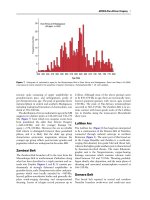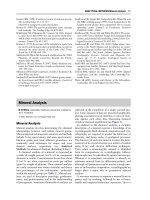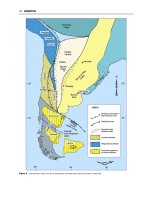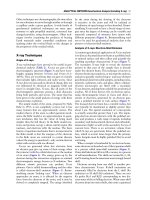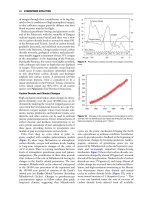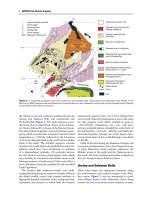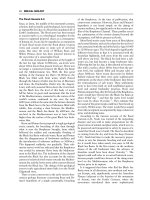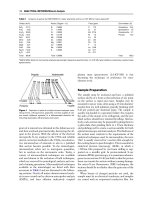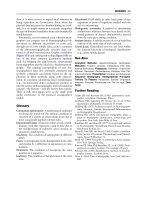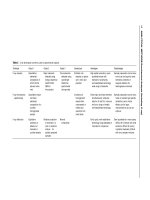Encyclopedia of geology, five volume set, volume 1 5 (encyclopedia of geology series) ( PDFDrive ) 2164
Bạn đang xem bản rút gọn của tài liệu. Xem và tải ngay bản đầy đủ của tài liệu tại đây (78.21 KB, 1 trang )
PETROLEUM GEOLOGY/Production 321
Figure 14 Probe permeability measurements showing small scale heterogeneities. Reproduced with permission from Weber KJ
and van Geuns LC (1990) Framework for constructing clastic reservoir simulation models. Journal of Petroleum Technology 42(10): 1248
1253, 1296 1297. ß Society of Petroleum Engineers.
fracture porosities. Flowmeter-type production logs
can also show open fractures. The shear zones around
faults can be analysed with borehole imaging logs in
horizontal wells. Fracture density, as a result of tectonic deformation, can be estimated by determining
the rate of change of the dip. In fault and fracture
analysis, extensive outcrop studies have added enormously to the knowledge of fault zone compositions
and fracture distributions (Figure 18).
Correlation and Use of Analogues
The correlation from well to well requires a detailed
knowledge of the facies distribution and expectation
values of the typical shape and dimensional relationships of genetic reservoir bodies. For this purpose,
there is a need for a data bank of such information
based on outcrop and field data, complete with their
sedimentological setting, including type of basin and
climate, to be able to choose a proper analogue
example. Such data banks have been compiled by
several oil companies, while many universities are
engaged in reservoir analogue outcrop studies. The
stratigraphy forming the major framework of the
reservoir can be interpreted with sequence stratigraphical principles. These principles and, especially,
the analysis of sea-level fluctuations can be used
to delineate the sedimentary successions, and are a
great help in correlating the wells (Figure 19).
Sea-level changes have a large influence on the sedimentary processes along time slices of the reservoir
and, in carbonates, they also have a strong impact on
diagenesis (e.g., leaching and dolomitization).
The well-known techniques of comparing the
floral and faunal contents of discrete intervals remain
very useful, not only for stratigraphical purposes, but
also for facies analysis. The palaeontological and
palynological studies can be carried out on drill cuttings whilst drilling, and thus can provide important
indications of drilling progress through a known
stratigraphical sequence. In combination with LWD
techniques, the correct casing setting depth can be
determined with sufficient safety margins.
